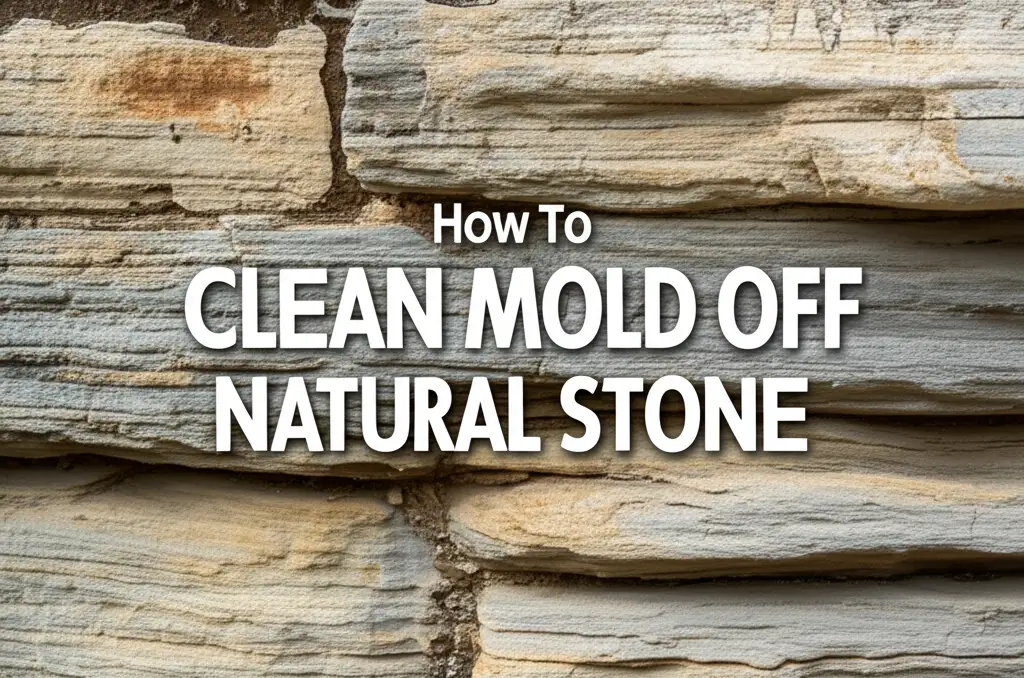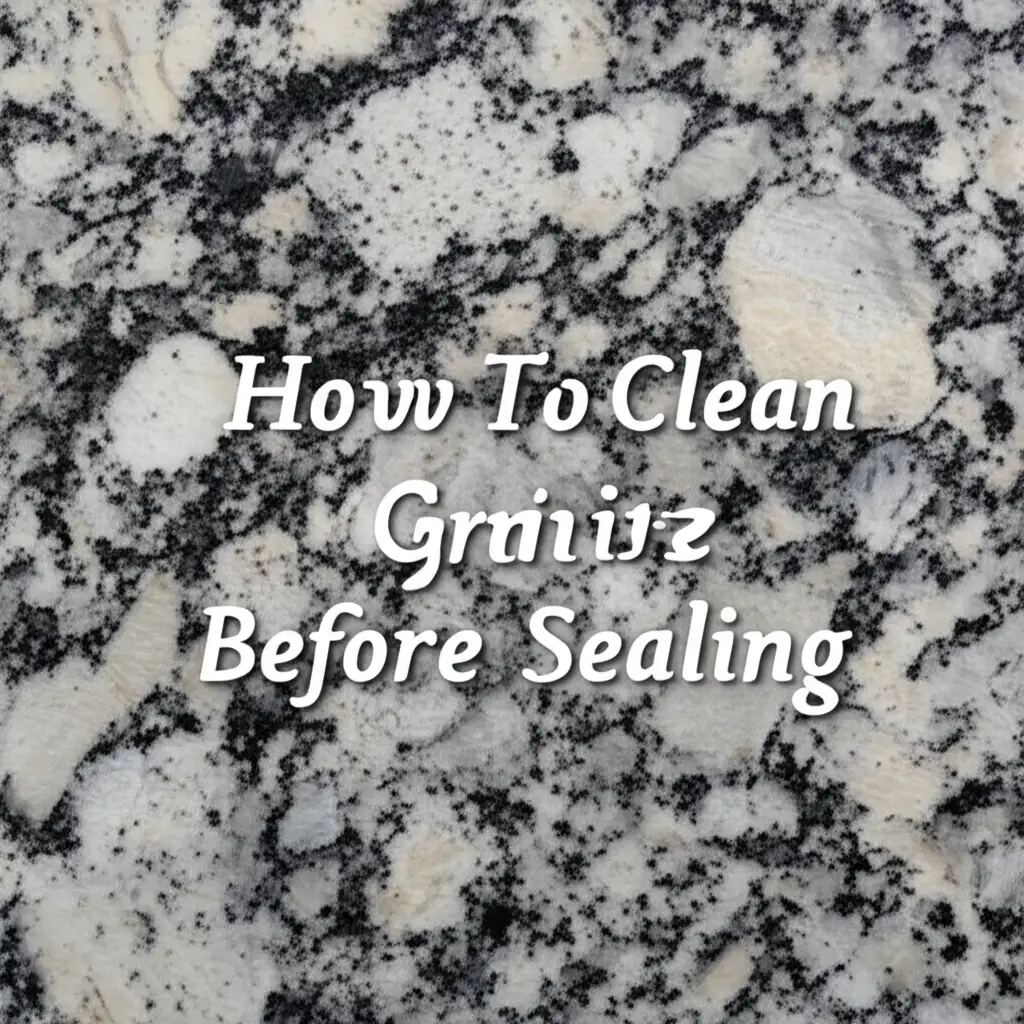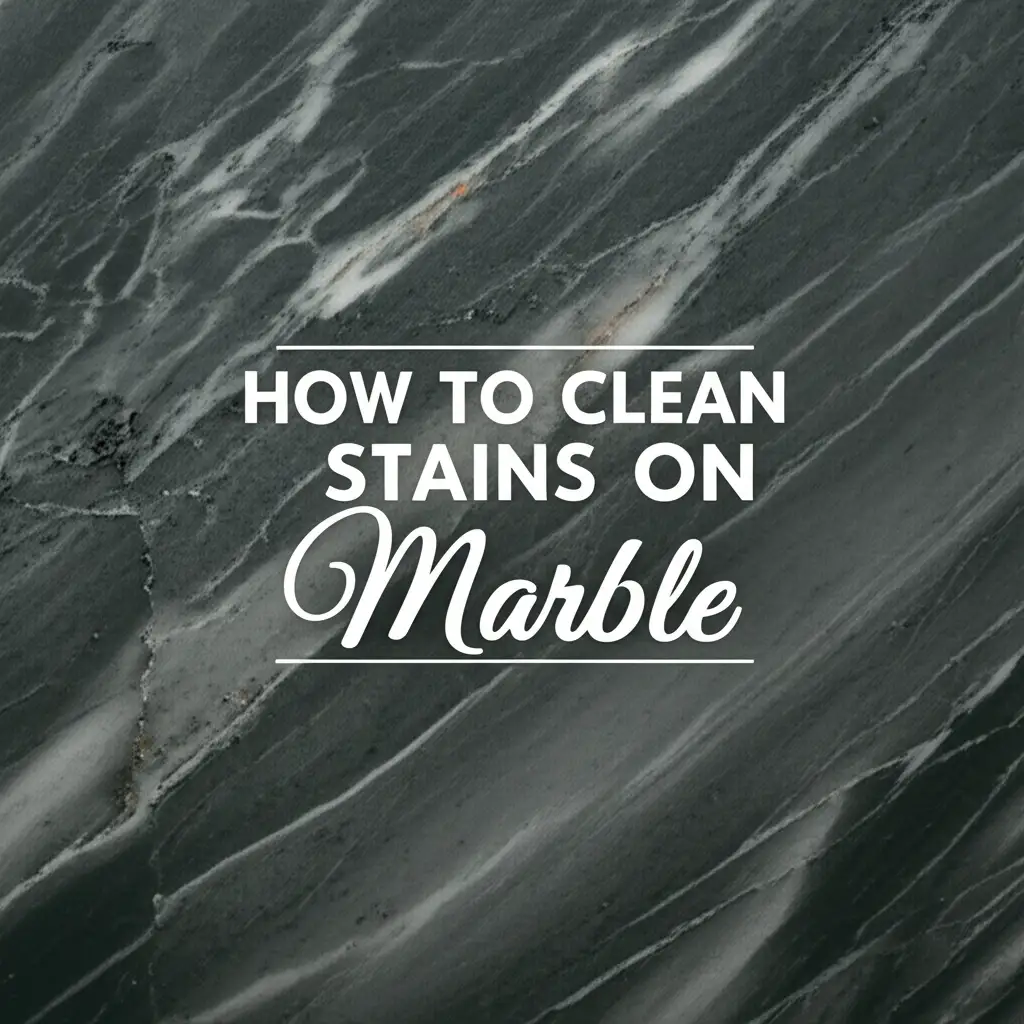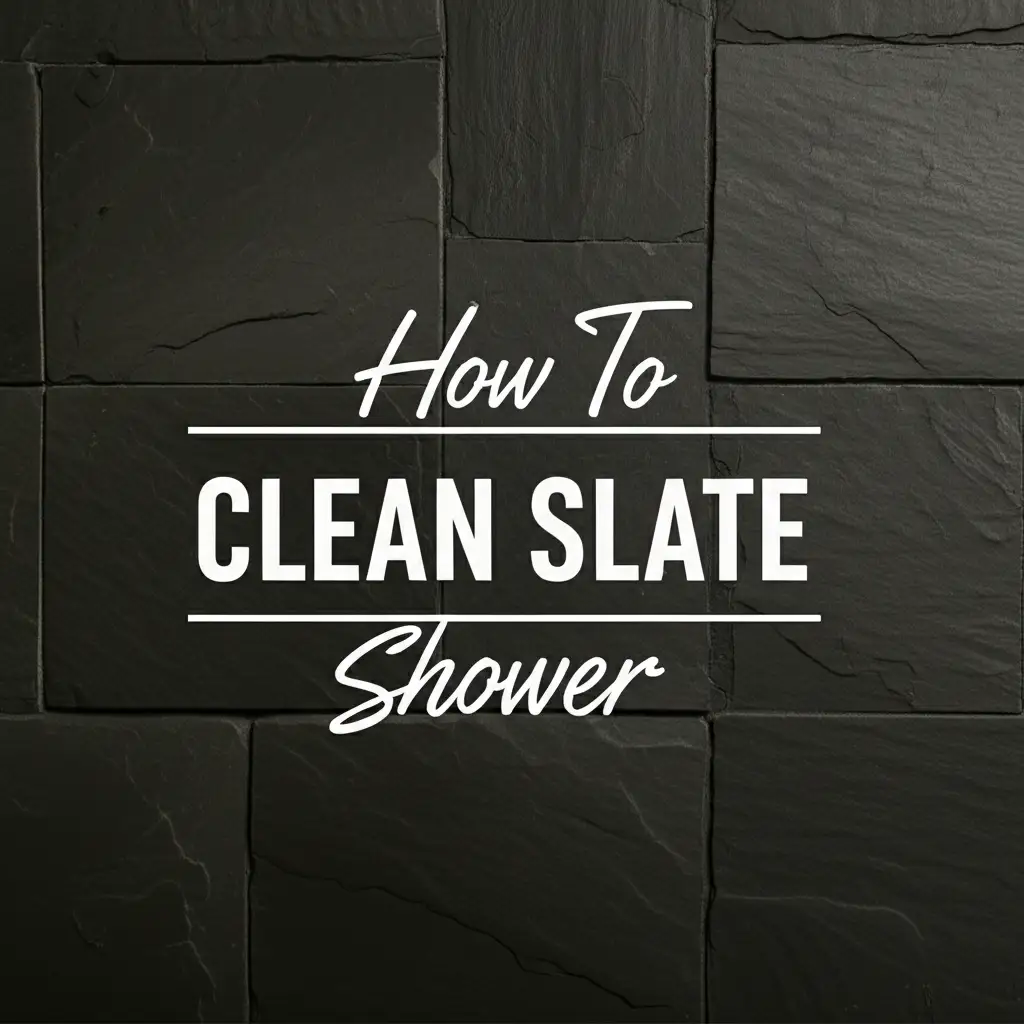· Stone Care & Cleaning · 10 min read
How To Clean Hard Water Stains From Granite
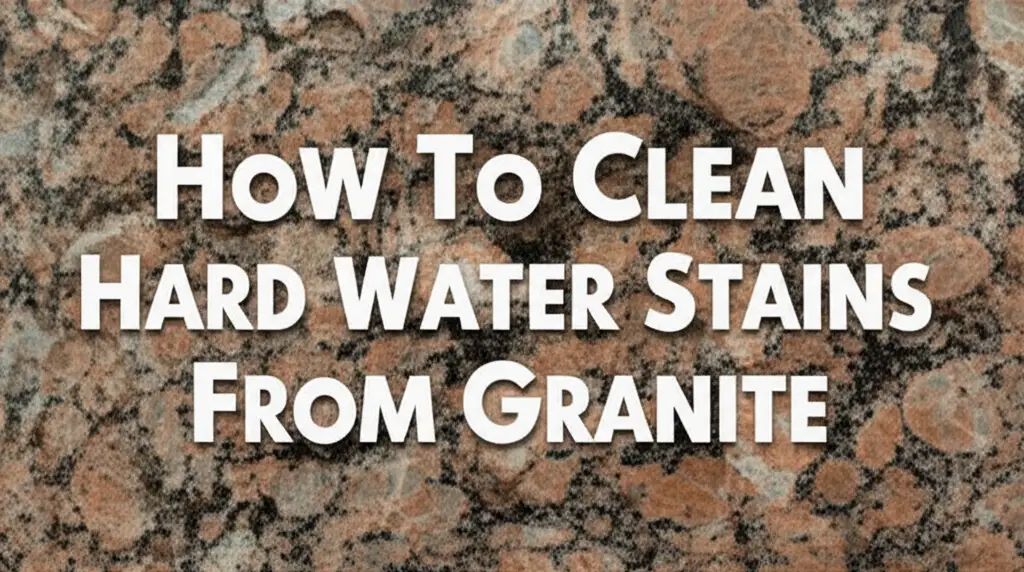
Clean Hard Water Stains from Granite: A Complete Guide
Hard water stains can really dull the natural beauty of your granite countertops. I know the frustration of seeing those cloudy, white marks appear on such a beautiful, durable surface. But don’t worry, these unsightly mineral deposits are not permanent. With the right approach and a bit of patience, you can effectively clean hard water stains from granite and restore its original shine.
In this guide, I will walk you through safe and effective methods to tackle hard water stains. We will cover gentle cleaning techniques for light marks and more robust solutions for stubborn buildup. You will also learn about preventive measures to keep your granite looking pristine long-term. Let’s make your granite sparkle again!
Takeaway
- Identify hard water stains as mineral deposits.
- Always test cleaning solutions in an inconspicuous area.
- Use gentle, pH-neutral methods for daily cleaning.
- Apply poultices for stubborn, set-in stains.
- Seal granite regularly to prevent future staining.
- Wipe spills and splashes immediately.
How do you clean hard water stains from granite?
To effectively clean hard water stains from granite, use a gentle, pH-neutral cleaner or a baking soda paste. Apply the solution to the stained area. Allow it to sit for a short period to break down mineral deposits. Then, gently wipe and rinse the surface thoroughly, ensuring no residue remains to protect your granite’s seal and finish.
Understanding Hard Water Stains and Granite Sensitivity
Hard water stains are a common problem in many homes. These stains form when mineral-rich water, primarily containing calcium and magnesium, evaporates on a surface. It leaves behind a chalky white or off-white residue. On granite, these deposits can be particularly noticeable because they obscure the stone’s natural patterns and shine. Understanding the nature of these stains helps us choose the best cleaning method.
Granite is a durable natural stone, but it is also porous and can react to certain chemicals. Acids are a major enemy of granite. Acidic cleaners can etch or dull the stone’s surface, permanently damaging its finish. This is why common hard water removers like vinegar or citrus-based cleaners, which are effective on many surfaces, should be avoided on granite. They can strip the sealant and create new, more severe problems. You must be careful to choose a cleaning agent that is both effective against minerals and safe for your stone.
Identifying a hard water stain is usually straightforward. It often appears as a dull, cloudy film or white spots. These stains feel rough to the touch because of the mineral buildup. Knowing this difference is key to tackling the issue correctly without harming your beautiful countertops. When you clean hard water from shower head, you often use acidic solutions. But granite needs a different approach.
Your granite likely has a protective sealant applied to it. This sealant helps prevent liquids, including hard water, from penetrating the stone. Over time, however, this sealant can wear down, making your granite more vulnerable to staining and etching. This emphasizes the importance of using gentle cleaners and regularly resealing your granite. Neglecting this step can lead to more persistent stains and damage.
Essential Preparations Before Cleaning Granite
Before you begin cleaning any hard water stains, proper preparation is crucial. This step ensures safety and helps prevent accidental damage to your granite. First, gather all the necessary supplies. You will need soft cloths or microfiber towels, a spray bottle, a pH-neutral stone cleaner, and potentially baking soda or a stone-safe poultice mix. Always avoid abrasive sponges or harsh brushes, as these can scratch the delicate surface of your granite.
Next, clear the area completely. Remove any items from your countertops, such as small appliances, decorative pieces, or food items. This gives you unobstructed access to the stained areas and prevents these items from getting wet or damaged during the cleaning process. A clear workspace also allows you to see the stains clearly and apply your chosen cleaner precisely.
Always perform a patch test before applying any cleaning solution to a large area. Choose an inconspicuous spot on your granite, like under an appliance or inside a cabinet door. Apply a small amount of your chosen cleaner to this area. Wait a few minutes to see if there is any adverse reaction, such as discoloration, etching, or dulling. If the granite shows no negative effects, you can proceed with confidence. This simple step can save you from costly mistakes.
Ensure proper ventilation, especially if you are using commercial cleaning products. Open windows or turn on exhaust fans to allow fresh air to circulate. Although we focus on safe, pH-neutral options for granite, good airflow is always a good practice during any cleaning task. By taking these preliminary steps, you set yourself up for a successful and safe cleaning experience.
Gentle Cleaning Methods for Minor Hard Water Stains
For minor or newly formed hard water stains on your granite, gentle methods are often sufficient. These techniques are designed to remove mineral buildup without risking damage to your stone. My first recommendation is to use warm water and a soft cloth. Often, a quick wipe with just water can remove very light mineral deposits before they have a chance to set. You can also try adding a few drops of mild dish soap to warm water. Ensure the dish soap is truly mild and free of harsh chemicals or degreasers that might strip your granite’s seal.
After applying the soapy water, gently wipe the stained area. Use a circular motion, applying light pressure. Rinse the area thoroughly with clean water to remove all soap residue. Drying the surface immediately with a clean, dry microfiber cloth is very important. This prevents new water spots from forming and helps restore the granite’s natural sheen. This method is excellent for routine maintenance and for catching stains before they become more stubborn.
Another effective gentle method involves using baking soda. Baking soda is a mild abrasive that can help lift mineral deposits. Create a paste by mixing baking soda with a small amount of water. You want a consistency similar to toothpaste. Apply this paste directly onto the hard water stain. Let it sit for about 15-20 minutes. This allows the baking soda to work on breaking down the mineral bonds.
After the dwell time, gently scrub the paste using a soft cloth or a non-abrasive sponge. Avoid any harsh scrubbing that could scratch the surface. Rinse the area completely with clean water and dry it immediately. This method is effective for slightly more stubborn stains that plain water and soap cannot remove. If you have used baking soda and water to clean stains off mattress with baking soda, you will be familiar with its gentle power. Remember, consistency and patience are key with these gentle approaches.
Tackling Stubborn Hard Water Stains on Granite
When gentle methods don’t quite cut it, you need to employ more targeted strategies for stubborn hard water stains on granite. A poultice is often the most effective and safest solution for these deeply set mineral deposits. A poultice is a soft, paste-like material that draws out stains from porous surfaces. For hard water stains, which are mineral-based, you can create a simple poultice using baking soda and hydrogen peroxide. Do not use vinegar or lemon juice, as these are acidic and will damage your granite.
To make the poultice, mix about a quarter cup of baking soda with enough hydrogen peroxide to form a thick, spreadable paste. The consistency should be like peanut butter. Apply this paste generously over the hard water stain, ensuring the stain is completely covered with a layer about a quarter to half-inch thick. Avoid extending the paste far beyond the stain’s edges. This focused application ensures the poultice works directly on the problem area.
Once applied, cover the poultice with plastic wrap. Tape down the edges of the plastic wrap to create an airtight seal. This prevents the poultice from drying out too quickly and allows it to work more effectively. Let the poultice sit for an extended period, ideally 12 to 24 hours. The longer it stays moist, the more time it has to draw out the minerals. Patience is key here.
After the waiting period, remove the plastic wrap. Allow the poultice to dry completely. As it dries, it will absorb the minerals from the granite. Once dry, gently scrape off the hardened paste using a plastic scraper or a wooden spatula. Do not use metal tools as they can scratch the granite. Rinse the area thoroughly with clean water and dry it with a soft cloth. You might need to repeat this process if the stain is very severe. This method is highly effective, similar to how one might approach cleaning hard water stains on shower glass if the glass was a porous surface, which it is not.
Commercial Cleaners: What to Look for and Avoid
Choosing the right commercial cleaner for your granite is crucial for avoiding damage. Many general-purpose cleaners can be harmful to natural stone. When selecting a product, the most important factor is its pH level. Always opt for cleaners specifically labeled as “pH-neutral” or “stone safe.” These products are formulated to clean effectively without stripping your granite’s sealant or etching its surface. Look for cleaners designed for daily granite maintenance or those that explicitly state they are safe for natural stone.
Avoid cleaners that contain acidic ingredients. This includes vinegar, lemon juice, or other citrus extracts. While these are common household cleaners, their high acidity will dull and etch granite, causing irreversible damage. Similarly, steer clear of ammonia-based cleaners, bleach, or abrasive cleaning powders. These harsh chemicals can degrade your granite’s sealant, make the stone more porous, and lead to more severe staining in the future. I also advise against using general bathroom cleaners, even if they claim to remove hard water stains, as they are often too strong for granite. You will find that many products used to clean hard water stains from stainless steel sink might also be too harsh for granite.
Before applying any commercial product to your entire granite surface, always perform a small spot test in an inconspicuous area. This allows you to observe any potential adverse reactions. Read the product label carefully and follow the manufacturer’s instructions for dilution and application. Most stone-safe cleaners can be sprayed directly onto the stain, allowed to sit for a few minutes, then wiped away with a soft cloth.
After using a commercial cleaner, rinse the granite surface thoroughly with clean water. This removes any chemical residue. Immediately dry the granite with a clean, lint-free cloth. Leaving water to air dry can lead to new hard water spots. Investing in a good quality, pH-neutral granite cleaner is a worthwhile investment for maintaining the beauty and longevity of your countertops.
Preventing Future Hard Water Stains on Granite
Preventing hard water stains is much easier than removing them once they have set. Regular maintenance is your best defense against these unsightly mineral deposits. The most important preventive measure is to wipe down your granite countertops daily. After every use, especially after preparing food or using water, take a soft, dry cloth and wipe the entire surface. This removes any standing water or splashes before minerals have a chance to dry and form stains. Even quick clean-ups can make a huge difference in preventing build-up.
Another key to prevention is ensuring your granite is properly sealed. Granite is a porous stone, and a good sealant acts as a barrier, preventing liquids, including hard water, from penetrating and causing deep-seated stains. The frequency of sealing depends on your granite’s porosity and how much it is used. Most granite needs to be resealed every 1-3 years. You can perform a simple water test to check your sealant’s effectiveness: sprinkle a few drops of water on the granite surface. If the water beads up, your sealant is working. If it soaks in quickly, it is time to reseal.
- granite cleaning
- hard water removal
- stone maintenance
- natural stone care
- calcium stains

